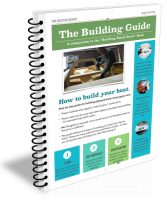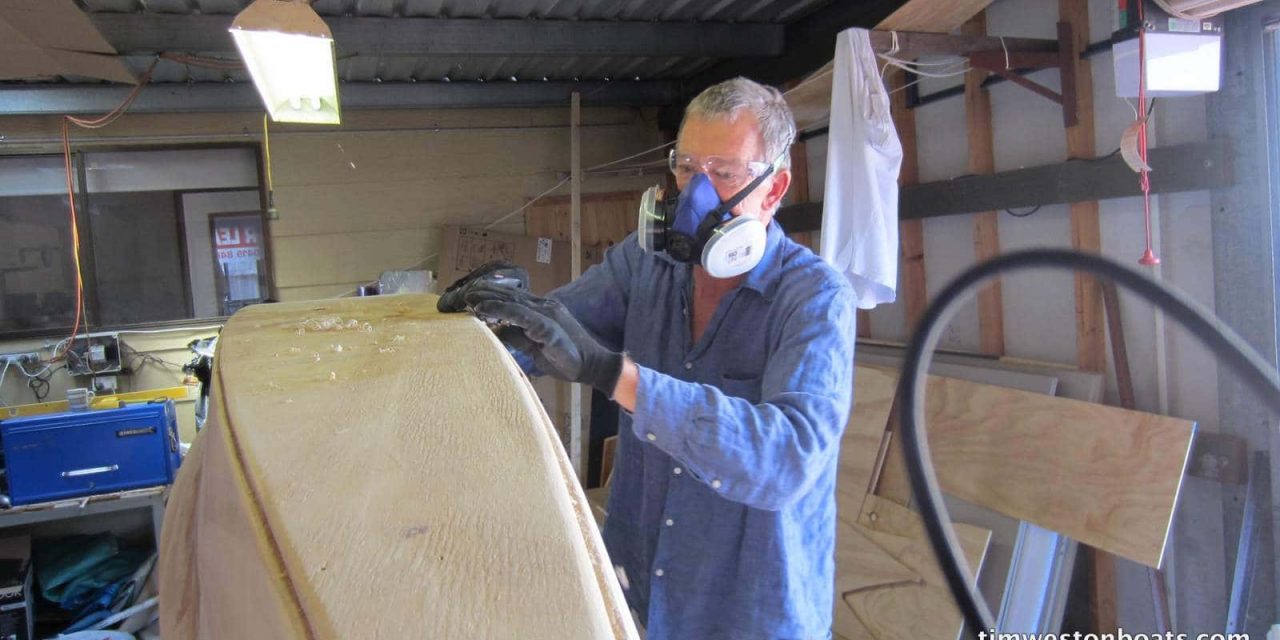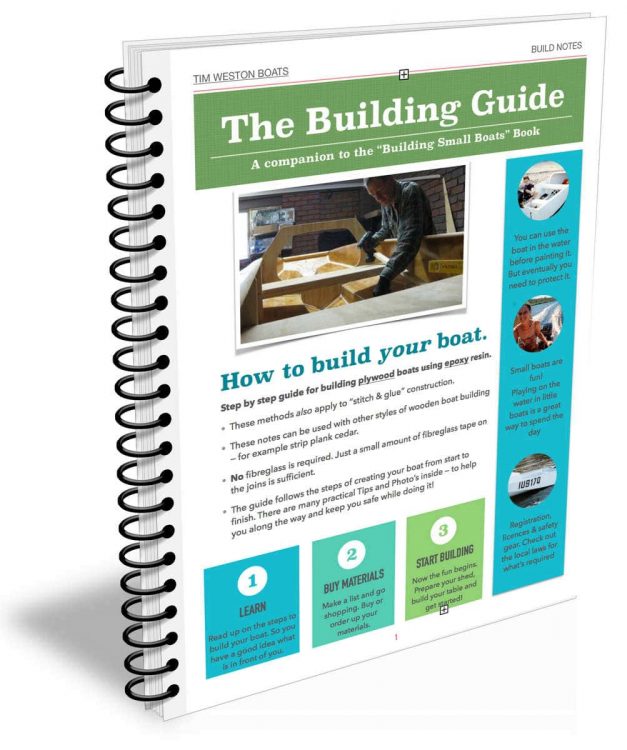Keeping safe – while building your boat
Building a boat is a great pastime, being free to be creative without rules and regulations, like in many other areas of life and work. Whilst no one else is there to tell you what you can and can’t do in your own shed, it is still wise to have your own guidelines in place for some things. Safety is one of them.
There are many areas of safety related to building a boat, working with power tools for example but in this post, I want to talk about working with epoxy resin. Boat building is not inherently dangerous and neither is using epoxy resin, but there are a few things you need to know. The 2 main things to watch out for are –
- That we are not breathing dust or fumes
- That we are not getting epoxy on us.
Safety & Protective Gear
Respirators – breathing protection is a must. Boat building is a toxic job, be it a big job or a small one. You need good protection when boat building. Paper disposable masks are only really suitable for small jobs. They are not really comfortable, never usually seal well and they don’t do as good a job filtering as a respirator. I can never seem to get them to seal properly around my nose anyway.
It is worth your while, even on a small boat building job to think about investing in a good quality silicon respirator. Like a 3M or other quality brand that fits comfortably. The ones with twin cartridges are best, they are much more comfortable than the paper ones to wear.
Have it on at all times when you are making dust or are working with epoxy in an enclosed room. They are not cheap but they are much more comfortable to wear and do a fantastic job of keeping dust out.
Use the organic vapour cartridges for filtering fumes like epoxy and paint. Especially when you are working in a small garage, it filters out the smell and chemical odour of epoxy. While epoxy is nowhere near as bad as polyester/vinyl ester resins, it is still better to not be breathing its vapour.
I sometimes work without a respirator when applying fibreglass tape or making fillets or so on. If the area I am working in is well ventilated and I haven’t got my head inside a boat. But when coating big areas and especially if the shed is closed up or I have my head inside a boat, then I have it on. And when I’m sanding or cutting wood, I always have it on.
Another thing I like about using a respirator is, you can pull it down off your face letting it hang around your neck when you don’t need it. Even with sticky fingers. And get it back on again if you need it. If I’m in an open area, once I’m done mixing in the fillers, I will let the respirator drop down and hang from my neck while I continue to work. Note – mix your fillers outside of the area you are working, the Q-cells will be in the air for a long time after mixing.
If you don’t want to go all the way and buy a respirator then buy the best quality paper masks you can. Get the ones with the exhalation valve in them. And get the ones that filter organic vapour. The best place to buy them is from industrial safety stores, they have the good stuff.
Wood dust is not good for you and sanding semi-cured epoxy bog, like the day after it has been mixed, the dust is toxic. It takes up to 2 weeks to fully cure. When the epoxy is fully cured it is inert and safe, but when it is in its semi-cured state, it is toxic.
Work clothes – It’s a good idea to wear long sleeve shirts and long pants as you work, to prevent getting epoxy on your skin while working. It’s not even good to have the dust on your skin. If you spill epoxy on your clothes, change them straight away, before it soaks onto you. Buy old clothes from the op-shops to work in, from places like Saint Vincent de Paul’s. They don’t cost much and are more comfortable than overalls or other “work” gear. I did this during the 3 years I built my cat. Often times the clothes I bought were so good, they didn’t make it into the shed. I used them for normal wear!
Disposable gloves – You will go through boxes of these! Buy them by the hundred’s. Nowadays you can buy them in the supermarket but before, building my cat, I used to buy them in bulk from my doctor. Safety stores have the best quality. Nitrile gloves are the best if you can get them.
When working with epoxy you don’t want to get it on you. Use gloves whenever working, and long sleeve shirts and pants. Peel gloves off, turning them inside out as you take them off, so you don’t get epoxy on you as you remove them. Throw them in the bin, after the job or when you take a break. Get a new pair when you start again. You will go through hundreds of them, but that’s OK.
Epoxy is quite user-friendly and I think it’s a wonder substance. But if you continually get it on your skin it gets absorbed into your system. If you do this for too long you can eventually become allergic to it. And if that happens, your days of boat building are over. You will never be able to work with it again, not even get near enough to get a sniff of it, without having a reaction to it.
How not to build
I can still remember talking with a guy I met, on a beach one time, up in the Whitsundays. He was doing some repairs on a cat he lived on and he had beached his boat to work on it. The guy was a bit of a character, his boat was pretty rough and he looked a bit like his boat. But what I couldn’t believe was he was mixing epoxy in a big pot, stirring it with his bare hands! I shudder to think how is going today. I wonder if he still works on boats…
But having said all that, don’t be put off. If you do get any on you, wash it off with warm soapy water. Don’t use any solvents. I’ve been building boats for years with it, with the occasional spill or contact, without any problems. Just get into a clean routine and you shouldn’t have any problems.
In my Building Guide for building wooden boats, I talk more about using epoxy. You are welcome to download the guide, it is free and you can download it here.
download the guide, it is free and you can download it here.
I hope this information is helpful.
Regards
Tim Weston







